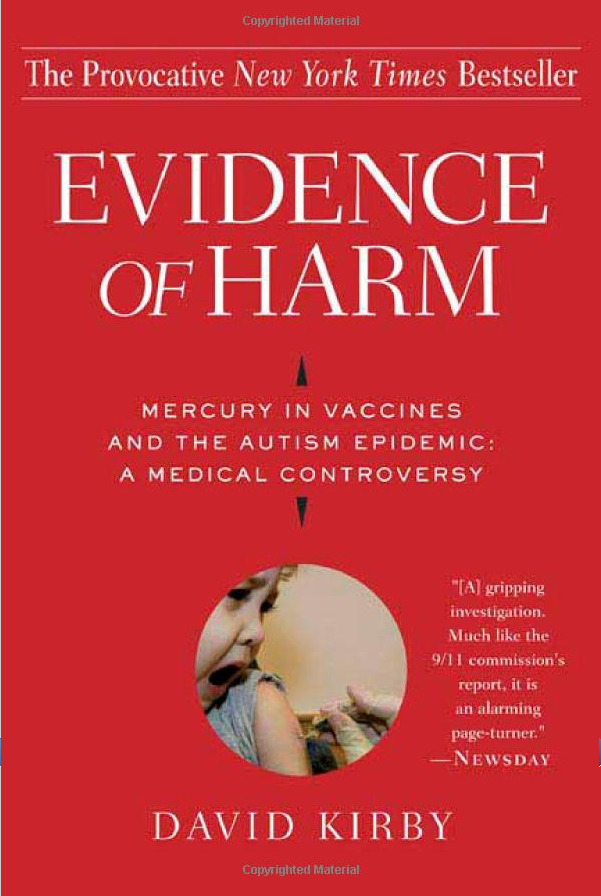Aug
31
2015
 A recent massive study attempting to replicate 100 published studies in psychology has been getting a lot of attention, deservedly so. Much of the coverage has been fairly good, actually – probably because the results are rather wonky. Many have been quick to point out that “science isn’t broken” while others ask, “is science broken?”
A recent massive study attempting to replicate 100 published studies in psychology has been getting a lot of attention, deservedly so. Much of the coverage has been fairly good, actually – probably because the results are rather wonky. Many have been quick to point out that “science isn’t broken” while others ask, “is science broken?”
While many, including the authors, express surprise at the results of the study, I was not surprised at all. The results support what I have been saying in this blog and at SBM for years – we need to take replication more seriously.
Here are the results of the study:
We conducted replications of 100 experimental and correlational studies published in three psychology journals using high-powered designs and original materials when available. Replication effects (Mr = .197, SD = .257) were half the magnitude of original effects (Mr = .403, SD = .188), representing a substantial decline. Ninety-seven percent of original studies had significant results (p < .05). Thirty-six percent of replications had significant results; 47% of original effect sizes were in the 95% confidence interval of the replication effect size; 39% of effects were subjectively rated to have replicated the original result; and, if no bias in original results is assumed, combining original and replication results left 68% with significant effects. Correlational tests suggest that replication success was better predicted by the strength of original evidence than by characteristics of the original and replication teams.
Continue Reading »
Aug
28
2015
 A French court recently awarded a disability allowance ($912 per month for three years) to Marine Richard based upon her claim that she has EHS (electromagnetic hypersensitivity). This is a concerning development because EHS is likely not a real disease. The situation, however, is a bit more nuanced than it may at first appear.
A French court recently awarded a disability allowance ($912 per month for three years) to Marine Richard based upon her claim that she has EHS (electromagnetic hypersensitivity). This is a concerning development because EHS is likely not a real disease. The situation, however, is a bit more nuanced than it may at first appear.
EHS and Non-Specific Symptoms
First for some background on EHS (or Idiopathic Environmental Intolerance attributed to electromagnetic fields, IEI-EMF, as it is now called in the scientific literature) – sufferers claim that they are sensitive to electromagnetic fields and that these fields cause symptoms such as headaches, dizziness, nausea, fatigue, tingling sensation, or palpitations. In one case series of EHS specifically subjects reported:
The most frequently reported symptoms from exposure to smart meters were (1) insomnia, (2) headaches, (3) tinnitus, (4) fatigue, (5) cognitive disturbances, (6) dysesthesias (abnormal sensation), and (7) dizziness. The effects of these symptoms on people’s lives were significant.
Continue Reading »
Aug
27
2015
 The FDA (Food and Drug Administration) recently asked for public comment on its regulatory policies regarding homeopathy. They probably didn’t figure that a fellow federal agency, the FTC (Federal Trade Commission) would respond.
The FDA (Food and Drug Administration) recently asked for public comment on its regulatory policies regarding homeopathy. They probably didn’t figure that a fellow federal agency, the FTC (Federal Trade Commission) would respond.
The FTC also recently asked for public comment on how it can better regulate homeopathic product advertising. While the FDA regulates food and drugs (including supplements), the FTC regulates claims that sellers can make about those foods and drugs. The FTC is now complaining to the FDA that their policies are in inherent conflict. They write:
The staff comment notes that the FDA’s regulatory framework for homeopathic drugs, set forth in a 1988 Compliance Policy Guide, does not require that over-the-counter (OTC) homeopathic drugs be approved by FDA as safe and effective if they satisfy certain conditions, including that the product’s label contains an indication for use. Yet the policy guide does not require sellers to have competent and reliable scientific evidence to support the indication for use.
The comment states that given the FTC’s long-standing advertising substantiation policy that health claims must be substantiated by such evidence the FDA’s current regulatory framework may harm consumers and confuse advertisers.
Continue Reading »
Aug
25
2015
 A recent commentary published in the New England Journal of Medicine (NEJM) by Philip J. Landrigan and Charles Benbrook has sparked some controversy. Landrigan and Benbrook are publishing in a medical journal because they claim the issue of genetically modified organisms (GMOs) is a public health issue. They use extremely strained logic and misrepresentation to make their point, however.
A recent commentary published in the New England Journal of Medicine (NEJM) by Philip J. Landrigan and Charles Benbrook has sparked some controversy. Landrigan and Benbrook are publishing in a medical journal because they claim the issue of genetically modified organisms (GMOs) is a public health issue. They use extremely strained logic and misrepresentation to make their point, however.
Equating GMOs with Herbicides.
The primary logical flaw in their argument is their attempt to equate GMOs with the use of herbicides. They write:
Herbicide resistance is the main characteristic that the biotechnology industry has chosen to introduce into plants.
and
The first of the two developments that raise fresh concerns about the safety of GM crops is a 2014 decision by the Environmental Protection Agency (EPA) to approve Enlist Duo, a new combination herbicide comprising glyphosate plus 2,4-D. Enlist Duo was formulated to combat herbicide resistance.
The authors also acknowledge that:
” genetically engineered crops can increase yields, thrive when irrigated with salty water, or produce fruits and vegetables resistant to mold and rot.”
Continue Reading »
Aug
24
2015
 I gave a talk on the vaccine controversy over the weekend. I was not surprised that a couple of audience members had a lot of questions taken directly from anti-vaccine propaganda sites. What was interesting was that they were still pushing the idea that thimerosal, a mercury-based vaccine preservative, is linked to autism.
I gave a talk on the vaccine controversy over the weekend. I was not surprised that a couple of audience members had a lot of questions taken directly from anti-vaccine propaganda sites. What was interesting was that they were still pushing the idea that thimerosal, a mercury-based vaccine preservative, is linked to autism.
The reason this is interesting and illuminating is that the thimerosal hypothesis is not just mostly dead, it is most sincerely dead. It is pushing up the proverbial daisies.
A Brief History of Thimerosal
Thimerosal was developed as an organomercurial anti-microbial agent shortly after World War I. It was soon discovered that it has great anti-microbial properties and was well tolerated when injected into rabbits or rats even at high doses. This made it superior to anything else available at the time.
Bacterial contamination was a serious problem for vaccines in the first half of the 20th century. Thimerosal in tiny doses, well below safety limits, proved to be an effective agent for preventing contamination. By the 1940s thimerosal was being added to several vaccines for this purpose.
Continue Reading »
Aug
21
2015
 A new meta-analysis of 323 studies looks at 93 possible factors associated with the risk of developing Alzheimer’s disease (AD). AD is a neurodegenerative disorder affecting the entire brain that causes a slowly progressive dementia over years.
A new meta-analysis of 323 studies looks at 93 possible factors associated with the risk of developing Alzheimer’s disease (AD). AD is a neurodegenerative disorder affecting the entire brain that causes a slowly progressive dementia over years.
Dementia is a generic term for a chronic disorder of memory and cognition. AD is a specific disease that causes dementia. It is the most common cause of dementia, responsible for about half of all cases. There are 5.2 million people with AD in the US, most over the age of 65. About one-third of people 85 years or older have AD.
AD, therefore, is a significant cause of a common condition that causes extreme disability and death in the older population. There is currently no cure for AD. Available treatments are considered symptomatic – they improve memory and function modestly but do not alter the course of the disease. Preventing AD, therefore, is very important.
The current meta-analysis looked at cohort studies and case-control studies. These are two different types of observational studies, meaning that they are observing what happens or has happened to people but does not randomize people to different groups. It is difficult to draw conclusion about cause and effect from observational studies because of possible confounding factors. The advantage, however, is that they can observe large populations. In the current analysis the researchers looked at 93 factors with >5,000 subjects in the pooled studies.
Continue Reading »
Aug
20
2015
 Vandana Shiva is one of the loudest voices speaking out against GM (genetic modification) technology and modern agriculture. She is an ideologue and a crusader, which unfortunately means that she feels free to play loose with the facts and the science as long as it serves her narrative. Michael Specter did an excellent article about Shiva a year ago for The New Yorker. This quote puts much of Shiva’s propaganda into perspective:
Vandana Shiva is one of the loudest voices speaking out against GM (genetic modification) technology and modern agriculture. She is an ideologue and a crusader, which unfortunately means that she feels free to play loose with the facts and the science as long as it serves her narrative. Michael Specter did an excellent article about Shiva a year ago for The New Yorker. This quote puts much of Shiva’s propaganda into perspective:
“There are two trends,” she told the crowd that had gathered in Piazza Santissima Annunziata, in Florence, for the seed fair. “One: a trend of diversity, democracy, freedom, joy, culture—people celebrating their lives.” She paused to let silence fill the square. “And the other: monocultures, deadness. Everyone depressed. Everyone on Prozac. More and more young people unemployed. We don’t want that world of death.”
To her, GMOs are part of a world of death, while opposing GMOs is all about joy and freedom. She is anti-corporate, anti-West, anti-globalization, and anti-technology. Her campaign is largely one of lies and misinformation. She would also apparently rather have people starve than eat GMOs.
As reason.com reports:
Ten thousand people were killed and 10 to 15 million left homeless when a cyclone slammed into India’s eastern coastal state of Orissa in October 1999. In the aftermath, CARE and the Catholic Relief Society distributed a high-nutrition mixture of corn and soy meal provided by the U.S. Agency for International Development to thousands of hungry storm victims. Oddly, this humanitarian act elicited cries of outrage.
Continue Reading »
Aug
18
2015
 We don’t know, but we can do some interesting thought experiments.
We don’t know, but we can do some interesting thought experiments.
The only confirmed life in the Universe is here on Earth. That gives us one data point, so we know it is at least one planet per universe. The universe is an extremely large place. There are hundreds of billions of galaxies in the visible universe, each with hundreds of billions of stars on average, most of which seem to have planets. According to Ethan from Starts with a Bang:
With at least 200 billion galaxies out there (and possibly even more), we’re very likely talking about a Universe filled with around 1024 planets, or, for those of you who like it written out, around 1,000,000,000,000,000,000,000,000 planets in our observable Universe.
This number may be much larger. There are also many rogue planets not orbiting stars, and there may be as many stars between galaxies as there are within galaxies. So maybe, rough estimate, tack another zero on there.
Continue Reading »
Aug
17
2015
 The press release reads: “On Wikipedia, politically controversial science topics vulnerable to information sabotage.” They could have left off the qualifier, “On Wikipedia” and I think the statement would remain accurate.
The press release reads: “On Wikipedia, politically controversial science topics vulnerable to information sabotage.” They could have left off the qualifier, “On Wikipedia” and I think the statement would remain accurate.
But of course they are referring to a specific study, “Content Volatility of Scientific Topics in Wikipedia: A Cautionary Tale,” by Adam Wilson and Gene Likens. Likens co-discovered the acid rain phenomenon in North America and was concerned that the Wikipedia entry on acid rain seems to be edited frequently with misinformation.
Wilson and Likens made a comparison of the last ten years of Wikipedia edits for three politically controversial (but not scientifically controversial) topics: evolution, acid rain, and climate change, and compared these to four non-controversial topics: the standard model in physics, heliocentrism, general relativity, and continental drift. They found that the controversial topics were edited much more frequently than the non-controversial ones.
“For example, over the period we analyzed, the global warming page was edited on average (geometric mean ±SD) 1.9±2.7 times resulting in 110.9±10.3 words changed per day, while the standard model in physics was only edited 0.2±1.4 times resulting in 9.4±5.0 words changed per day.”
Continue Reading »
Aug
14
2015
 When did our ancestors first start to use tools? That is a very interesting question, and immediately leads to the question of how we could know. What kind of evidence could there be to establish human tool use?
When did our ancestors first start to use tools? That is a very interesting question, and immediately leads to the question of how we could know. What kind of evidence could there be to establish human tool use?
The most obvious evidence would be the tools themselves. Fortunately stone tools are made of stone, which is highly durable and can last millions of years. Earlier this year researchers published evidence of the now earliest known stone tools, from 3.3 million years ago. This finding was significant for several reasons.
First, it pushed back tool use 700,000 years. Perhaps even more significant, prior to this find the oldest confirmed stone tools were associated with the species Homo habilis, the first of the Homo genus that led to modern humans. It could therefore be said that sophisticated tool use (meaning modified tools that can be recognized) was unique to the Homo genus. These new tools, called the Lomekwian tool culture, predate Homo habilis, and are likely associated with Australopithecus afarensis.
Continue Reading »
 A recent massive study attempting to replicate 100 published studies in psychology has been getting a lot of attention, deservedly so. Much of the coverage has been fairly good, actually – probably because the results are rather wonky. Many have been quick to point out that “science isn’t broken” while others ask, “is science broken?”
A recent massive study attempting to replicate 100 published studies in psychology has been getting a lot of attention, deservedly so. Much of the coverage has been fairly good, actually – probably because the results are rather wonky. Many have been quick to point out that “science isn’t broken” while others ask, “is science broken?”














